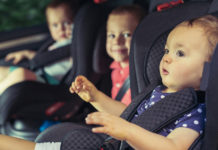Mouthguards and helmets can help ward off other serious head and facial injuries, but there is no good evidence that they can help prevent concussion, and paradoxically, they may even encourage players to take greater risks.
But that is precisely why it is so important to recognise and treat concussive symptoms promptly, says the Consensus Statement on Concussion in Sport, published in the British Journal of Sports Medicine.
The Consensus Statement is the fourth revision of recommendations first developed in 2001 in Vienna, in a bid to offer some practical and evidence based guidance to healthcare professionals on the on-field assessment of the condition, and one of the most important aspects of its treatment – the timing of return to play.
In high profile sports team doctors are under pressure to get players back into competition as quickly as possible. But safe return to play after concussion is a key issue across all sports, irrespective of whether they are played at elite level.
This latest version of the Consensus Statement, which has the backing of the International Olympic Committee, FIFA, the International Equestrian Federation, and the International Rugby Board, was drawn up after a two day meeting in Zurich, Switzerland, in November last year.
Over the course of the two days, researchers from around the world were invited to present the latest findings on this common type of brain injury, which has the potential to cause long term neurological damage if not dealt with appropriately, particularly in sports, such as football, rugby, ice hockey, horse riding, skiing, and boxing, where the risk of concussion is high.
A panel of 32 international experts then distilled the research – details of which are published in the current Injury Prevention and Health Protection (IPHP) issue of the British Journal of Sports Medicine – until complete agreement was reached.
The Consensus has been designed to raise awareness of concussion among the public, so for the first time includes a concussion recognition tool (CRT).
And it clarifies the definition of concussion to emphasise that a player does not have to lose consciousness before being considered concussed and therefore removed from play. Symptoms of concussion can range from headache and memory loss to irritability, slowed reaction times, and sleep disturbance, it says.
It contains a new focus on the assessment and management of concussion in kids, who should not be returned to play the same day and who may require longer to heal than adults, it says.
And it provides a useful Q&A, a handy pocket symptom checker and assessment tool, as well as advice on medico-legal considerations and injury prevention.
It makes clear that mouthguards and helmets have a role in minimising injuries and are to be recommended, but emphasises: “There is no good clinical evidence that currently available protective equipment will prevent concussion.”
“An important consideration in the use of protective equipment is the concept of risk compensation…where the use of [this] equipment results in behavioural change, such as the adoption of more dangerous playing techniques, which can result in a paradoxical increase in injury rates,” it cautions.
While the competitive/aggressive elements of some sports make them fun to play and watch, “sporting organisations should be encouraged to address violence that may increase concussion risk,” it recommends.
Source: BMJ Group










